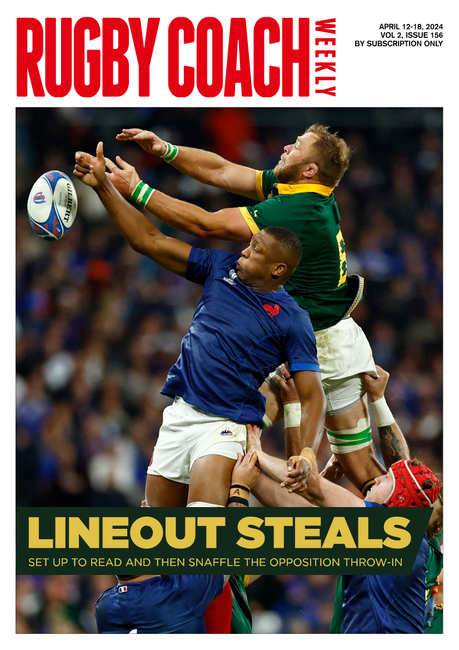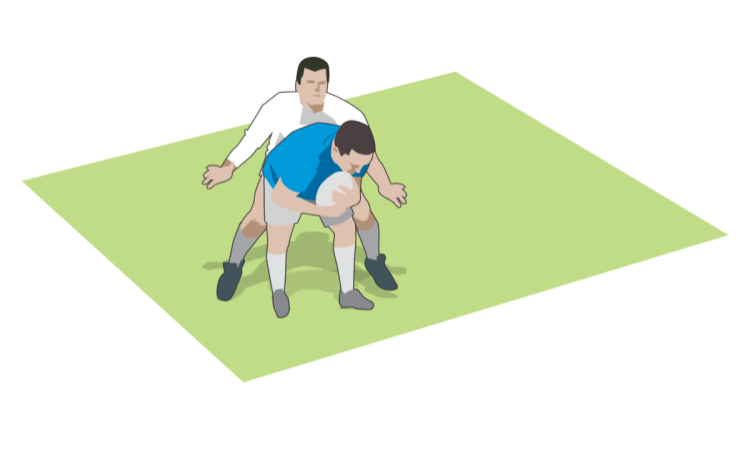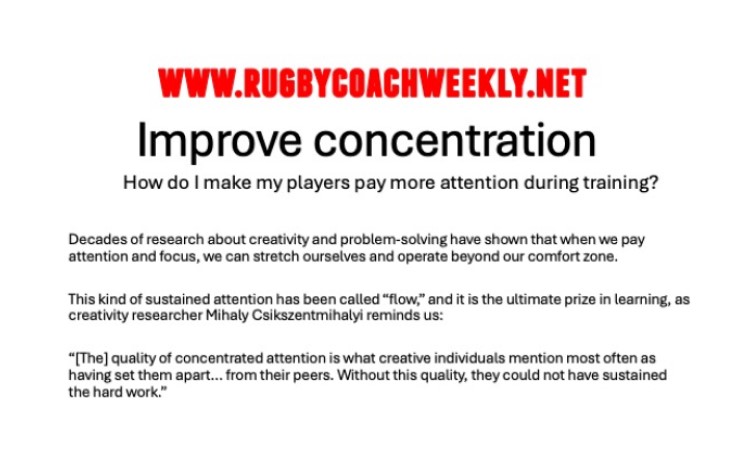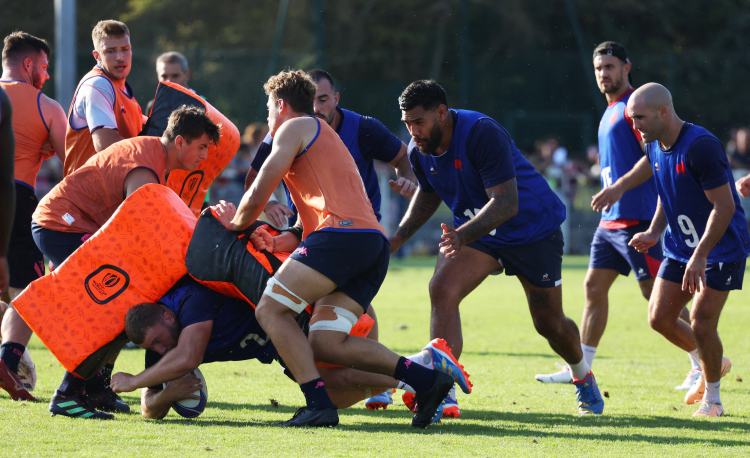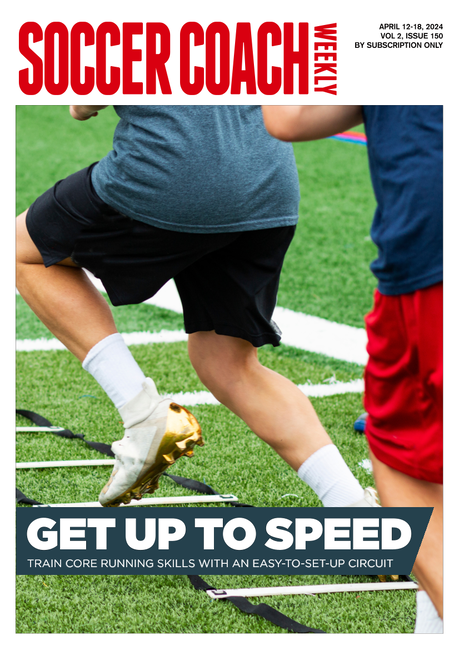You are viewing
1 of your 2 free articles
Three into one continuity
Contactby Dan Cottrell
Players will need to move from contact situations, developing a basic open play attack structure in order to keep the ball always alive and available to play in the next phase. By Chema Fernandez, IRB L3 coach and 30+ years of coaching experience
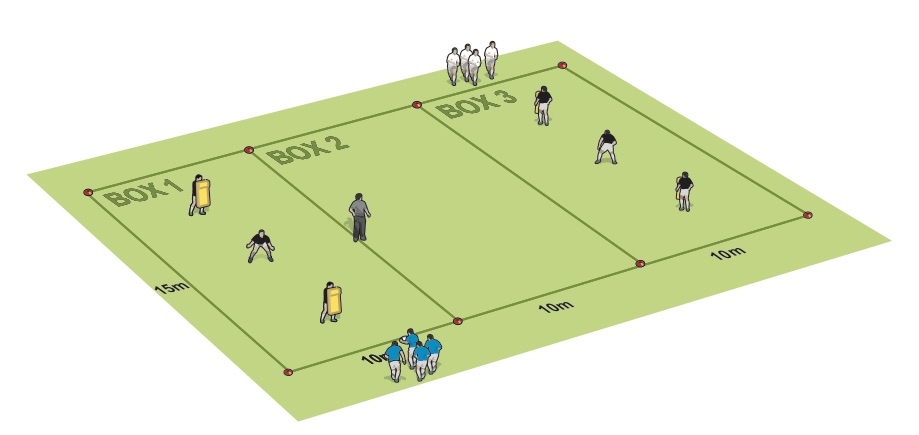
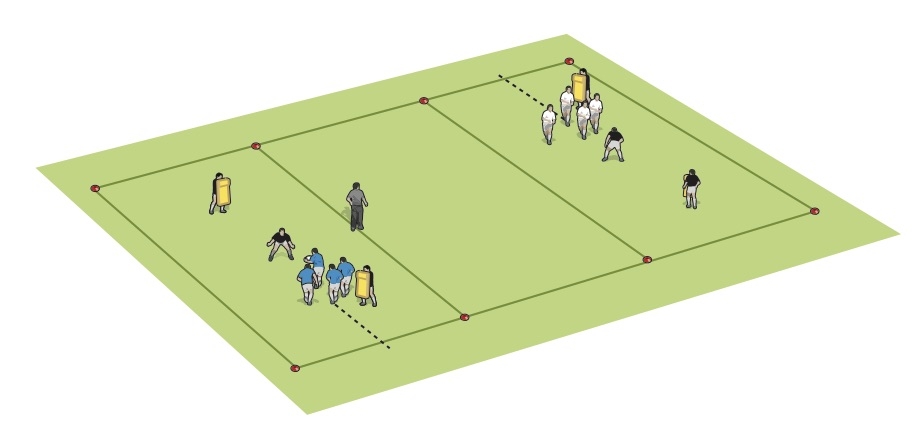
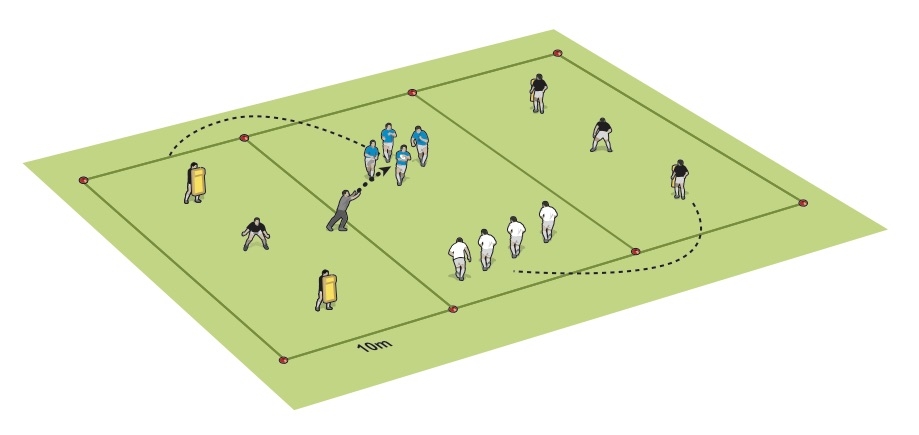
Move forward keeping the possession of the ball in the contacts – continuity in contact situations.
Three 15x10m boxes. Ruck pads and balls.

- Two attacking groups of four work down their own corridor
- Put two ruck-pad holders and a tackler in each corridor

- The attackers bump past the ruck pad and take a tackle from the defender

- When they reach the end of the corridor, they turn into the middle corridor, leaving their ball behind (scoring with it)
- Throw a ball to one of the groups who then attacks the far end of the box. Play full contact
CHALLENGE
Move forward keeping the possession of the ball in the contacts – continuity in contact situations.
SET UP
Three 15x10m boxes. Ruck pads and balls.
HOW TO DO IT
- Put two groups of four attackers, each group with a ball, in front of the narrowest side of boxes 1 and 3. You have another ball.
- Put three defenders inside boxes 1 and 3, two of them with ruck pads (picture 1).
- On your signal, each group of attackers starts playing inside their box against the three defenders, bouncing off the ruck pads or being tackled by the defender without a pad (picture 2).
- In all cases, ball carriers must move forward during the contacts, and keep the possession of the ball with the help of supporting players.
- When each group of four attackers gets the end of the box, they face each other in the central box playing full contact with the ball you throw to one of the groups (picture 3).
TECHNIQUE
- Ball carrier supporters have to adapt their running pace and position in relation to the ball carrier before to the contact and then, to get in on the contact in order to keep the possession of the ball.
Newsletter Sign Up
Coaches Testimonials

Gerald Kearney, Downtown Las Vegas Soccer Club

Paul Butler, Florida, USA

Rick Shields, Springboro, USA

Tony Green, Pierrefonds Titans, Quebec, Canada
Subscribe Today
Be a more effective, more successful rugby coach
In a recent survey 89% of subscribers said Rugby Coach Weekly makes them more confident, 91% said Rugby Coach Weekly makes them a more effective coach and 93% said Rugby Coach Weekly makes them more inspired.
Get Weekly Inspiration
All the latest techniques and approaches
Rugby Coach Weekly offers proven and easy to use rugby drills, coaching sessions, practice plans, small-sided games, warm-ups, training tips and advice.
We've been at the cutting edge of rugby coaching since we launched in 2005, creating resources for the grassroots youth coach, following best practice from around the world and insights from the professional game.


